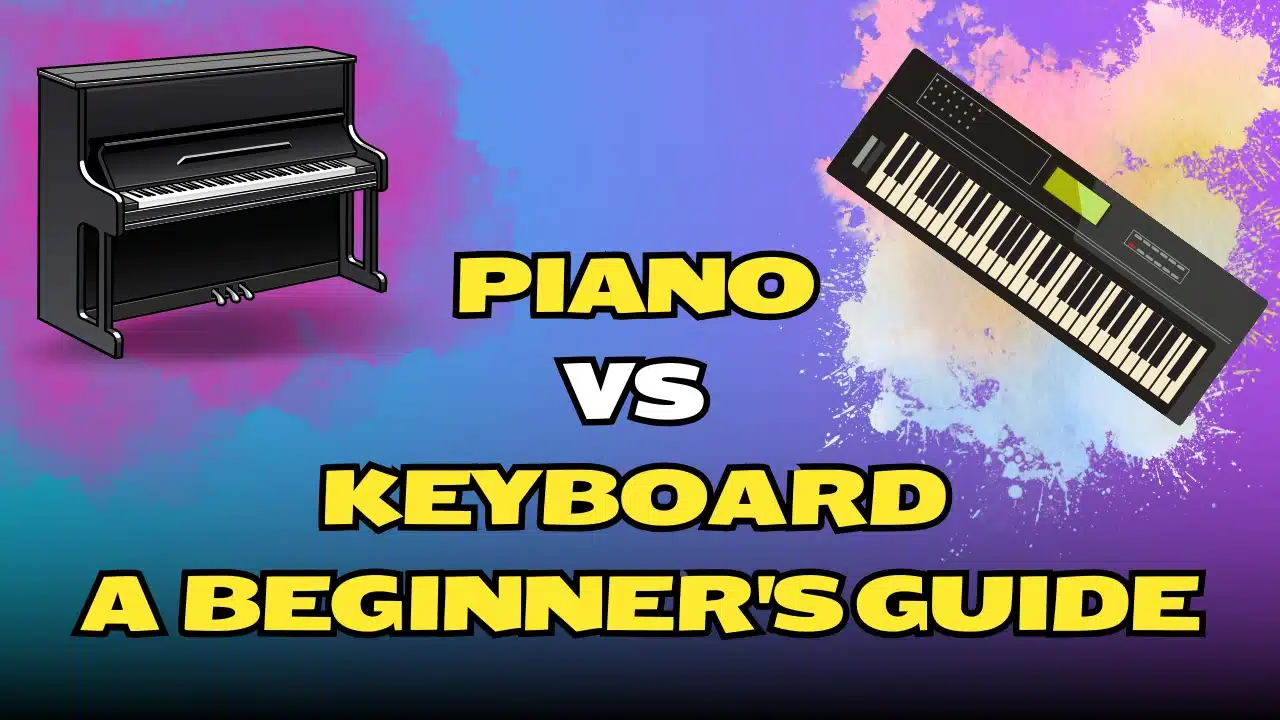If you are discovering music for the first time, you will find it quite interesting to know the difference that exists between a piano and a keyboard. While they may seem rather similar at the first sight, there are some differences which may influence how they perform, the sounds that they produce and how one may use them. Now, let us explore the main differences between piano and keyboard that will assist you in deciding which option may suit you in the best way.
What is a Piano?
Before getting into a difference between piano and keyboard first get to know about piano. It is an orchestral instrument, perhaps one of the oldest musical instruments that have been around for centuries. This is big in size, very massive and is primarily constructed from timber. Inside you have strings and hammers to produce sound. Every time you press a key, the hammer strikes a string and the strands start to vibrate in order to produce a note.
Types of Pianos
- Acoustic Piano: This is the most popular type of piano and has two sub – types including the grand piano and the vertical piano or the upright piano.
- Grand Piano: They are identified with a large size and ability to provide loud sound quality which makes them to be used in concert halls.
- Upright Piano: It is smaller and more compact making it ideal for household use as well as small tight spaces.
- Sound and Feel: Pianos have a loud and luxurious tone which is rather appealing to a lot of individuals. When comparing piano vs keyboard feel, The keys are weighted in piano which means that they feel heavy when you press them, which helps you build finger strength and control.
What is a Keyboard?
A keyboard is one of those devices that comprises the same look as a piano, but is electronic. However, it doesn’t contain strings or hammers inside. Instead, it uses speakers and digital sound samples to create music. Whether you’re looking at a digital piano vs keyboard, there are various types of keyboards to suit different musical needs.
Types of Keyboards
- Digital Keyboard: These are the ones that can be transported easily and they also have different sizes. Most of them are light in weight, thus can easily be relocated from one place to another.
- Digital Piano: A kind of an instrument that features keys which feel and sound like those of an acoustic piano and is usually weighted.
- Synthesizer: A keyboard device for making an enriched number of sounds, which is used in electronic music.
- MIDI Controller: A keyboard which does not produce sound by itself, but can be attached to a computer or any other device to operate music software.
- Sound and Feel: Keyboards may produce all sorts of sounds, piano, drum, animal, and so on. These are non-weighted and whilst making them easier to press they don’t feel as authentic as a piano. The difference between piano vs keyboard for learning often comes down to whether you prefer the versatility of sounds based on each instrument.
Difference Between Piano and Keyboard
Size and Portability
- Piano: When it comes to piano vs keyboard. Pianos are large instruments and therefore bulky and very massive. Grand pianos can be more than 228 cm in length and they can have a weight of more than 450 kg! Therefore, even the so-called ‘upright’ pianos are fairly heavy and not easily portable.
- Keyboard: Keyboards are much more portable. It can be 25 keys in size or as big as 88 keys depending on the type of keyboard. Keyboard is small enough that it can be easily carried around either under your arm or in a bag.
Cost
- Piano: Pianos are in most cases costly, this is because most of them are branded and new. New or high quality upright pianos cannot be bought for less than Rs. 1,00,000 and grand pianos cost even more.
- Keyboard: The keyboards are considerably cheaper. There are a number of beginner keyboards for Rs. 10,000 or even less whereas high-end models are still much cheaper than new pianos.
Maintenance
- Piano: Piano needs day to day maintenance. It also involves tuning that is supposed to be executed at least once or twice in a year. Wood and the strings used in the making of the musical instruments should also be kept in a stable condition so that they do not get spoiled.
- Keyboard: Keyboards are low-maintenance. Tuning is not necessary for them, because they are electronic. You just have to clean them regularly with appropriate cleaning materials and avoid exposing them to liquids.
Sound Variety
- Piano: A piano makes only one kind of sound which is already an amazing sound capable of responding to different kinds of emotions.
- Keyboard: Keyboards are rich instrumental sources as they have virtually an almost infinite number of sounds. It can play a piano sound, jump to organ, to a violin, and to a drum set and many others just by using a single button.
Versatility and Technology
- Piano: Pianos are elegant pieces of art, but they are strictly for producing music as they are. There are no features to incorporate effects or alter the sounds being produced.
- Keyboard: Keyboards, more than any other accessory, are very diverse. Some of them can be connected to computers, used to record music and are capable of giving guided lessons and have light up key options. There are also rhythm accompaniments on some keyboards that enable you to play according to the rhythm of the selected type of music.
Pianos are ideal for those who are so much inclined towards learning and want an authentic experience. Pianos also are touching pieces of furniture that can give a classy look to any room in your house.
Keyboards are perfect for beginners because they are affordable, portable, and versatile. They are fun since they create a diversification of sound and type of music that you can compose.
Here’s a summary table that highlights the key differences between a piano and a keyboard. In conclusion, understanding the difference between piano and keyboard is key to choosing the best instrument for your needs. Whether you’re leaning toward a digital piano vs keyboard or a grand piano, both options have their unique advantages. Ready to start your music journey start you free demo music class with musicmaster.in
| Feature | Piano | Keyboard |
| Sound Production | Acoustic with strings and hammers | Electronic, uses digital samples |
| Types | Grand Piano, Upright Piano | Digital Keyboard, Digital Piano, Synthesizer, MIDI Controller |
| Size and Portability | Large and heavy, not portable | Compact and lightweight, easy to transport |
| Cost | Expensive (costs in INR Lakhs) | Affordable (starting under Rs. 10,000) |
| Maintenance | Requires regular tuning and upkeep | Low maintenance, no tuning needed |
| Sound Variety | Limited to piano sounds | Wide variety of sounds (instruments, effects) |
| Playing Experience | Weighted keys, traditional feel | Lighter keys, includes learning aids |
| Learning Curve | Builds strong technique, heavier keys | Easier for beginners |
| Versatility | Limited to acoustic sound, no technology | Highly versatile, can connect to devices, and record |
| Space Requirements | Requires dedicated space | Space-saving, can be stored when not in use |
| Best For | Serious learners, classical training | Beginners, those exploring multiple sounds and styles |































